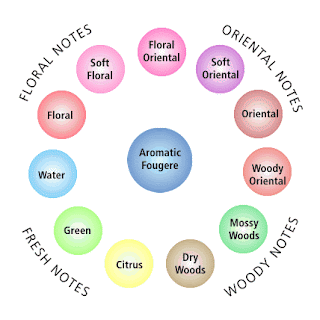
Smell is one of the first senses to develop in living creatures. In fact, research shows that the sense of smell has a special ability to arouse both feelings and memories relating to childhood.
Warm-up activity: Listen to an episode from the radio show Studio360.
At the end of this post are embedded audio clips from the NPR show Studio360. Each episode explores a different aspect concerning the sense of smell. Use the information you learn from one of these episodes to help you recognize the potential power of smell when employed by a writer.
Activity #1
Use the sense of smell to help you recall specific memories from your childhood. Gather a variety of "smelly" objects that have strong, distinct odors such as crayons, chocolate chip cookies, cinnamon, saw dust, dryer sheets, mothballs, or bananas. Sniff each sample and describe the memory that is invoked by the smell. Tip: Use the present tense when recording your memories. This will help you "return to the moment" of the event. Use your notes to create a list poem titled, "Smelly Childhood Memories".
Activity #2: Smelling Workshop
For each smell complete notes in the following areas:
Name the smell
Shape: Is it round or does it have edges?
Texture: Is it hard or soft? Sharp or dull? Smooth or rough? Even or jagged? Smooth or rough? Heavy or light? Cool or hot?
Taste: sweet, sour, bitter, spicy, salty, or yeasty?
Color: Is it bright or dark? What color is it? (Use a crayon or paint strip to record your answer)
Sound: Is it loud or soft? Fast tempo or slow?
Describe the memory or personal image that the smell invokes.
Sample responses:
Catcher’s mitt is a D flat gulp of lukewarm coffee. (wright)
The sharp cinnamon gracefully leaps off the high dive into your resting senses. (1st in class)
Old book smell: Stale biscotti in the back room of an old café. (2nd in class)
My mom’s perfume is a smooth slice of a yellow sweet cake.
Vicks attacks with an addictive spear masked by a quilt from grandmother’s attic.
The soft smooth jade green hemp is cool on mummy’s skin as her footsteps beat a slow tempo to shut off my light.
The jagged tea sets up residence in my nose, complete with a scratchy burgundy afghan.
This was Megan's visual representation for the smell of garlic:
The Mystery of Smell
Kurt Andersen and the writer Chandler Burr explore the allure and mystery that smell has for us. Burr explains how physicist Luca Turin solved the scientific mystery of how smell works. Burr believes that we should build museums for the nose.


No comments:
Post a Comment